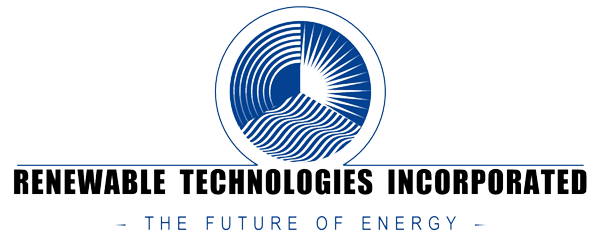As solar installation companies become more and more popular, people are starting to ask a lot of questions about solar power. What is it? How does it work? Why should I switch to solar? And is it really worth the investment? In this article, we will answer some of the most common Frequently Asked Questions about solar power that are commonly asked of solar installation companies.
What Is Solar Power?
When most people think of solar power, they think of photovoltaic panels and battery backups—but the sun has the power to do even more than generate electricity. Radiation from the sun can distribute heat, cause chemical reactions, and essentially keep life—both human and wild—moving further along the evolutionary path.
In the 21st century, however, solar power is advancing rapidly in our efforts to continue to generate renewable electricity as efficiently (and as affordably) as possible. Since NASA first used a 1-watt solar panel to power their satellites in the 1950s, the United States is now one of the leading producers of solar power in the world.
What Are Popular Applications of Solar Power?
Solar power can be used to heat homes or water heaters—and can even help with the food, textile, and chemical production as well as act as climate control for swimming pools, greenhouses, and agricultural buildings. Of course, when solar radiation is used to create electricity, we may enjoy the use of electronic devices or home appliances powered entirely by the sun. This is one of the driving reasons behind the fact that nearly 3 million American homes are now equipped with solar panels!
How Is Solar Power Generated?
There are several different ways a contractor might go about harnessing the power of the sun. The first is by capturing thermal energy through flat-plate collectors, which can be used to heat buildings, water tanks, pools, or ponds, or other structures. Another method of harnessing solar energy is to generate electricity by using photovoltaic panels. These are also sometimes referred to as photovoltaic cells, or solar cells. We will dive a little deeper into how photovoltaic panels work in the next section.
How Do Photovoltaic (PV) Panels Work?
As you may have surmised by the name, PV panels work thanks to the photovoltaic effect, which has scientific roots reaching back over 100 years ago. During this process, a PV cell absorbs sunlight through radiation exposure then uses that light to generate Direct Current electricity. (For more on the differences between Direct Current and Alternating Current electricity, read our recent article on the topic!)
Within each solar panel are many PV cells, which need no fuel, chemicals, or other catalysts to create energy other than the simple light from the sun. Of course, the efficacy of a PV cell depends on the level of sun exposure an area is able to get at any given time—so everything from the weather to the season could make generating solar energy a little more challenging. This is why many PV systems come with battery backups!
Are Solar Panels Expensive?
At one point near the beginning of modern solar panels in the 1950s, yes, they were outrageously expensive—well beyond the financial reach of the average American citizen. That is to say, they were nearly $300 for a 1-watt cell. Today, however, you can find solar panels for as little as $0.50 per watt; though if you are looking for the most efficient solar panels that will get you the return on your investment sooner rather than later, you may want to invest in newer, more efficient, more advanced solar panels that may cost a bit more. For reference, the average solar panel costs between $2.67-$3.43 to purchase and have installed.
Are Solar Panels Good for the Environment?
With the handful of different types of renewable energy technology gradually incorporating into the infrastructure of the energy sector come a rash of myths and misconceptions. Some people wonder if the technology for harnessing solar power has a footprint that offsets the benefits of this particular form of renewable energy.
The truth is, solar panels are one of the cleanest forms of renewable energy, relying on what is essentially the ultimate resource for energy for life on earth. With zero carbon emissions in the process of collecting heat or electricity, solar panels currently last about 25 years with no efficiency loss—and they are increasingly growing recyclable.
But what are solar panels made of? Some have heard a rumor that solar panels are made with rare earth metals that are damaging to the environment to mine and transport. However, these rare earth metals are actually associated with wind power, not photovoltaic cells; and most of the silicon for the production of these cells comes from countries like Russia, Brazil, and Norway. Rare earth metals, in contrast, are largely mined in and distributed from China.
So, with zero greenhouse emissions, a lifespan of 25 years, increasingly efficient technology, and the ability to recycle panels, solar power is actually one of the best forms of renewable energy for the planet.
Why Should I Switch to Solar?
Solar power has not historically been the most popular renewable energy source—in fact, for many years, hydroelectricity led the way as the most abundant source of renewable power. However, the world of renewable energy is rapidly changing, with solar power projected to take the lead as the most prominent source of renewable power by 2035.
Even if you don’t care about solar power’s incredibly low impact on the environment and increasingly efficient energy production as the technology continues to advance, you might care about how much it costs. As of 2020, the International Energy Agency described solar power as the most affordable form of electric power “in history,” citing the fact that the cost of PV systems decreased roughly 82% in the last ten years. For more on the reasons why solar power may be the best option for renewable energy, check out our recent article on the topic!
Solar Installation Companies Near Me
We hope we’ve answered some of your questions about solar power over the course of this articles, dispelled some myths, and illuminated the exponential growth of solar energy in the coming ten years or so. With the technology for creating efficient PV panels with ever-improving efficiency and an increasing ability to recycle retired panels, this zero-carbon footprint renewable energy source is by many predictions going to lead the way in affordable electricity by 2035.
Solar power is becoming increasingly popular amongst businessowners, industry leaders, farmers, and homeowners alike as more solar infrastructure gets built and it becomes all the easier to make the switch to renewables. More and more investors are looking forward and leading the way towards a greener—and cheaper—means of powering our planet.
Are you ready to make the switch and step towards renewable energy? Contact Renewable Technologies today for a quote!

